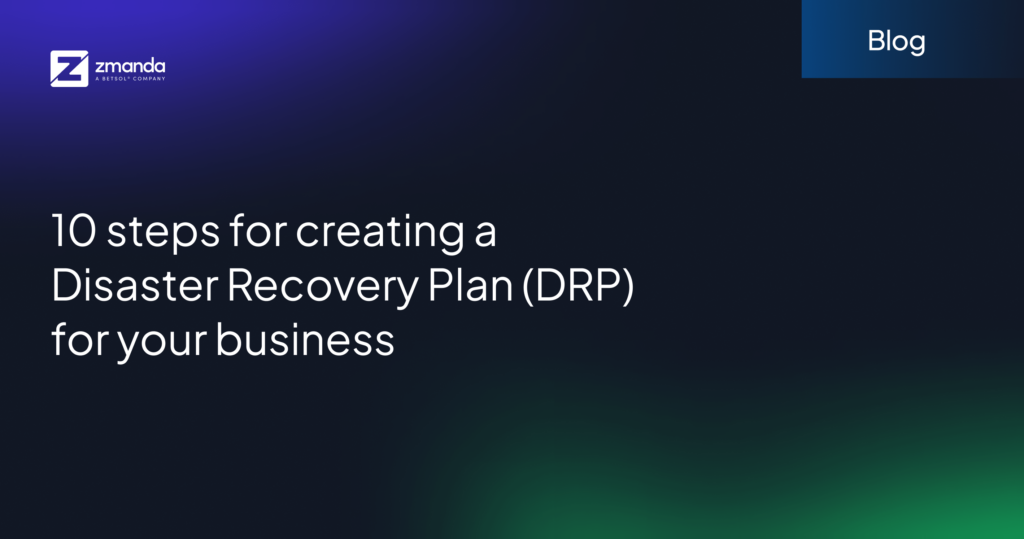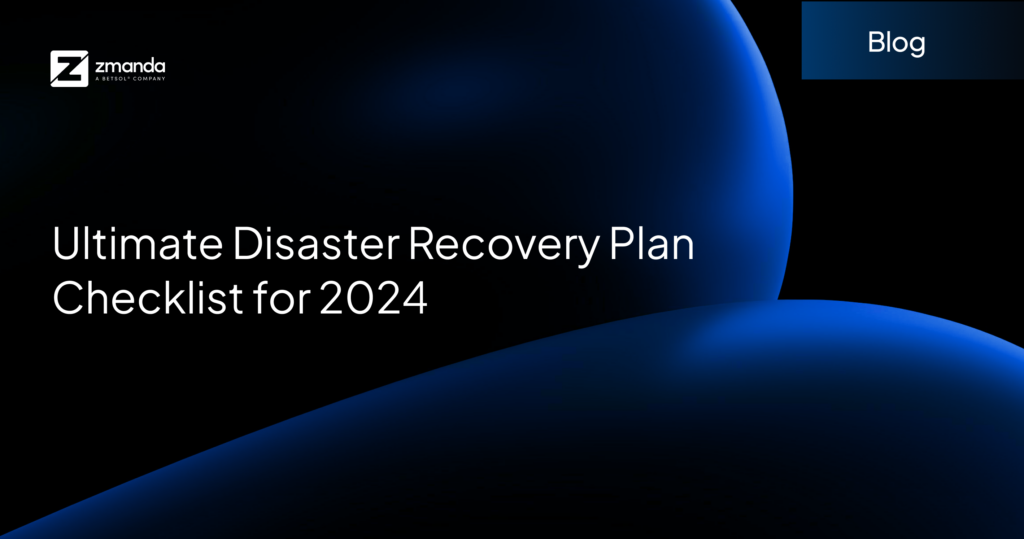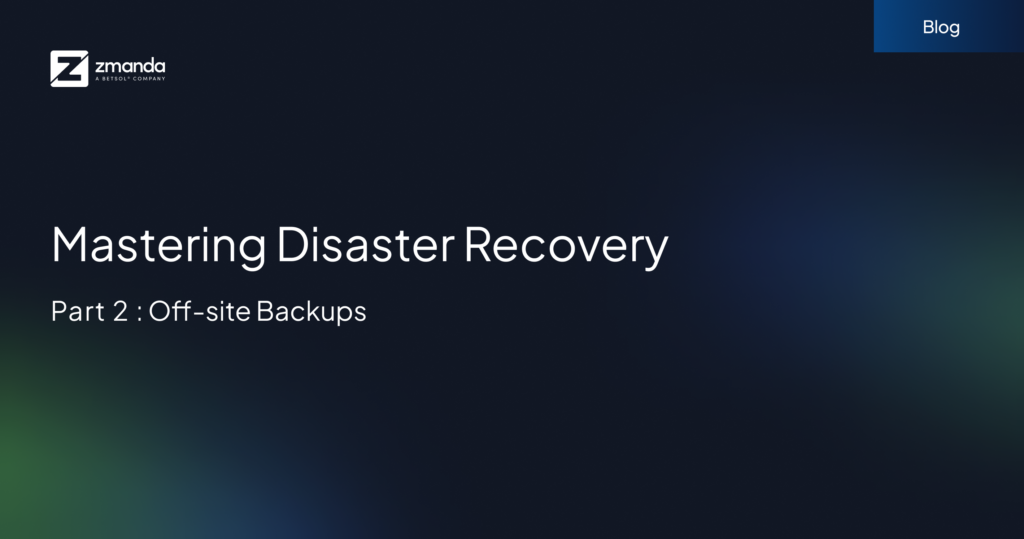
What is a Disaster Recovery Plan (DRP)?
A disaster recovery plan, or an IT disaster recovery plan is a document that helps an organization handle unexpected incidents, such as cyber-attacks, natural disasters, and power outages. They have the potential to shut down a company’s IT systems and hinder its overall operations.
A DRP aims to get your business up and running as quickly as possible during a disaster or data breach. With an effective disaster recovery plan, there is less chance of you losing out on profits for too long. Also, it should have backups set in place to prevent sensitive data (social security numbers or credit card information) from getting compromised.
Why is a Disaster Recovery Plan (DRP) Important?
Data loss, downtime, and tech outages are some of the new horror stories that even the top companies are going through nowadays. Imagine this: a cyberattack halts your entire operation, a flood devastates your server room, or a power surge throws your entire business into darkness. These unforeseen events can trigger a domino effect – crippled operations, lost revenue, damaged data, and potentially even a tarnished reputation.
A 2023 IBM study found that the average cost of an IT outage is a heart-stopping $10,000 per minute. Taking action in the face of such disasters is crucial, as the cost of not doing so is significant. It’s important to act promptly in response to these situations.
This is where a DRP (Disaster Recovery Plan) becomes your organization’s lifeline. It’s more than just a “nice to have” – it’s a critical shield that safeguards your business. Let’s dive into the benefits of having a DR plan in place.
Top 5 Benefits of the Disaster Recovery Plan (DRP):
1. Faster Recovery & Reduced Downtime:
When a disaster strikes and your IT systems are down. Without a DRP, valuable time is wasted figuring out what to do next. A DRP outlines clear steps for recovery, allowing your team to spring into action and get your business back online quickly. This minimizes downtime significantly.
2. Empowering Employees for Safety:
With a DRP in place, you can ensure your employees are well-trained in safety protocols for various emergencies. This could include evacuation procedures, fire safety measures, or data security protocols in case of a cyberattack. Empowered employees can react calmly and decisively, minimizing risk and ensuring everyone’s safety.
3. Safeguarding Financial Data & Enhanced Security:
Disasters can expose your sensitive financial data. A DRP ensures your financial records have an offsite backup, preventing permanent data loss even if your primary systems are compromised. Furthermore, a DRP may involve additional security measures like access controls and data encryption, creating a stronger shield against cyberattacks and financial fraud.
4. Pre-defined Operational Alternatives:
A DRP isn’t just about restoring data; it’s about keeping your business operational. Your DRP should outline alternative operational procedures for various scenarios such as switching to a cloud-based backup system, utilizing a secondary data center, or even implementing temporary work-from-home solutions. By having these alternatives pre-determined, you can maintain business continuity with minimal disruption.
5. Increased Customer Confidence:
Customers trust businesses that plan for the unexpected. A DRP shows you prioritize their needs by minimizing downtime during disasters. This builds loyalty and positions you as a reliable partner, giving you a competitive edge.
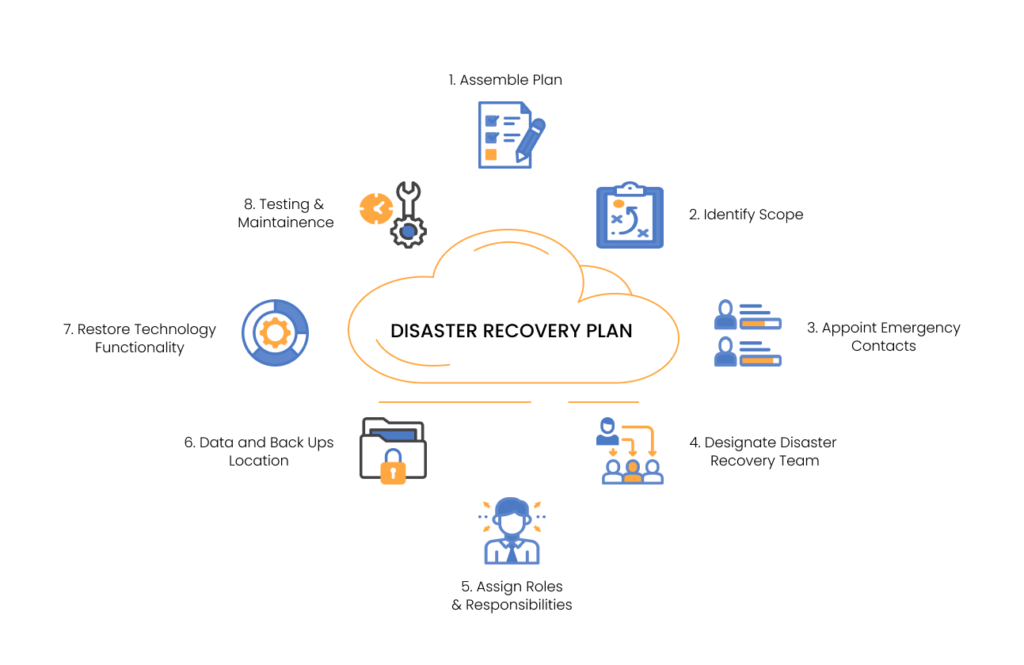
Common Disaster Recovery Plan (DRP) FAQs
Is There a Correlation Between a DRP[Disaster Recovery Plan] and a Business Continuity Plan?
Business continuity refers to how a company keeps running in the event of a natural or man-made disruption. On the other hand, a DRP is concerned with restoring normal business-critical operations after a disaster. It can be said that a DRP is more focused, and it is a specific part of a wider business continuity plan(BCP).
Pro tip-It is most effective to develop an information technology (IT) disaster recovery plan in conjunction with the business continuity plan (BCP).
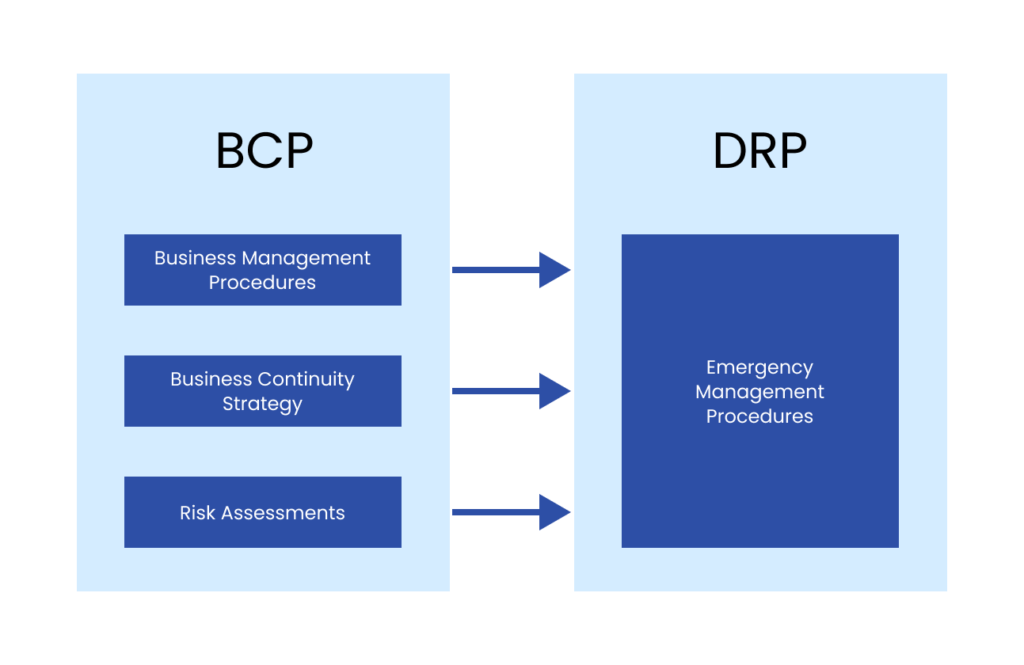
Who Prepares the Disaster Recovery Plan (DR Plan)?
If you can do your disaster recovery planning internally, outsource it to a managed service provider, or use any disaster recovery plan template, the document must contain complete, accurate, and up-to-date information on your company’s IT activities. The top management, IT management, human resources and finance specialists, and the security department are collectively responsible for outlining, implementing, testing, and maintaining the disaster recovery plan.
What are Different Ways to Test Your DRP (Disaster Recovery Plan)?
Businesses must test their disaster recovery plan regularly to ensure they are well-prepared to deal with any occurrence that could disrupt their vital business processes. It validates the disaster recovery program and BCP helps understand the shortcomings and provides the quickest solutions before they deteriorate and disrupt the ability to re-establish the key business operations.
- DRP Review: This is conducted by the team who made the plan and involves team members reading the entire DRP plan to uncover any flaws.
- DRP Checklist Method: This ensures that all the necessary elements required for disaster recovery are considered, thereby facilitating consistency.
- Structured walkthrough: As the name suggests, it allows us to walk through the proposed recovery procedures in a structured manner to identify the vulnerabilities.
- Simulation test: Here a disaster is simulated, and then the team is required to respond to the disaster as directed by the DRP. [To ensure the effectiveness of the DRP]
- Parallel processing: It usually entails recovering critical processing components at a different computing facility followed by data restoration from a previous backup.
Disaster Recovery Planning with Zmanda
The world is constantly changing, and so are the threats businesses face. From the recent surge in ransomware attacks to the ever-present possibility of natural disasters, companies need to be prepared for anything. Now is the time to plan your disaster strategy by thinking about goals, executing essential audits, planning for contingencies, or engaging with a third-party vendor, if needed, to avoid costly service disruptions.
Get started with Zmanda Pro one-size-fits-all solution that gives a perfect backup and a recovery solution at the right price.
